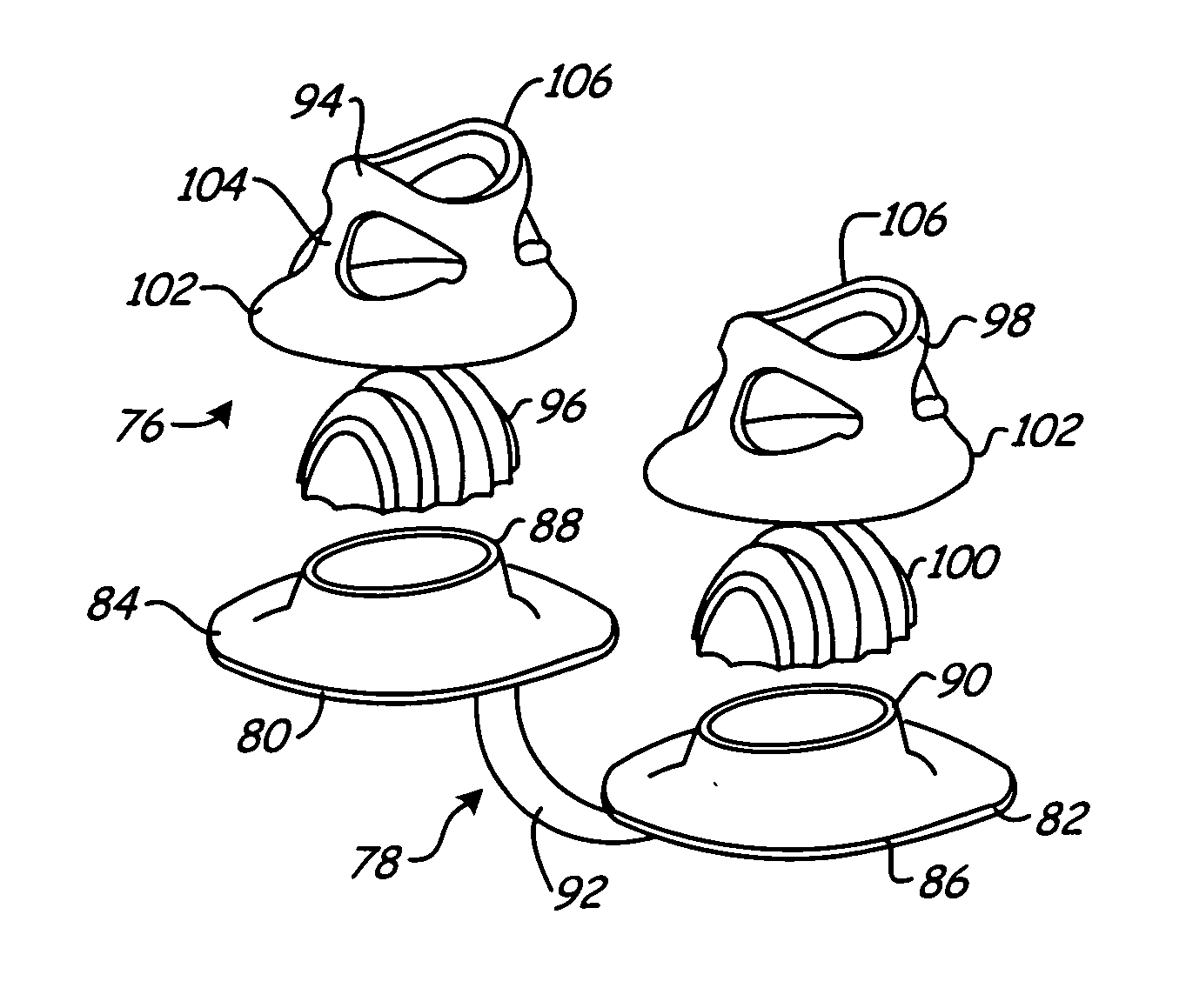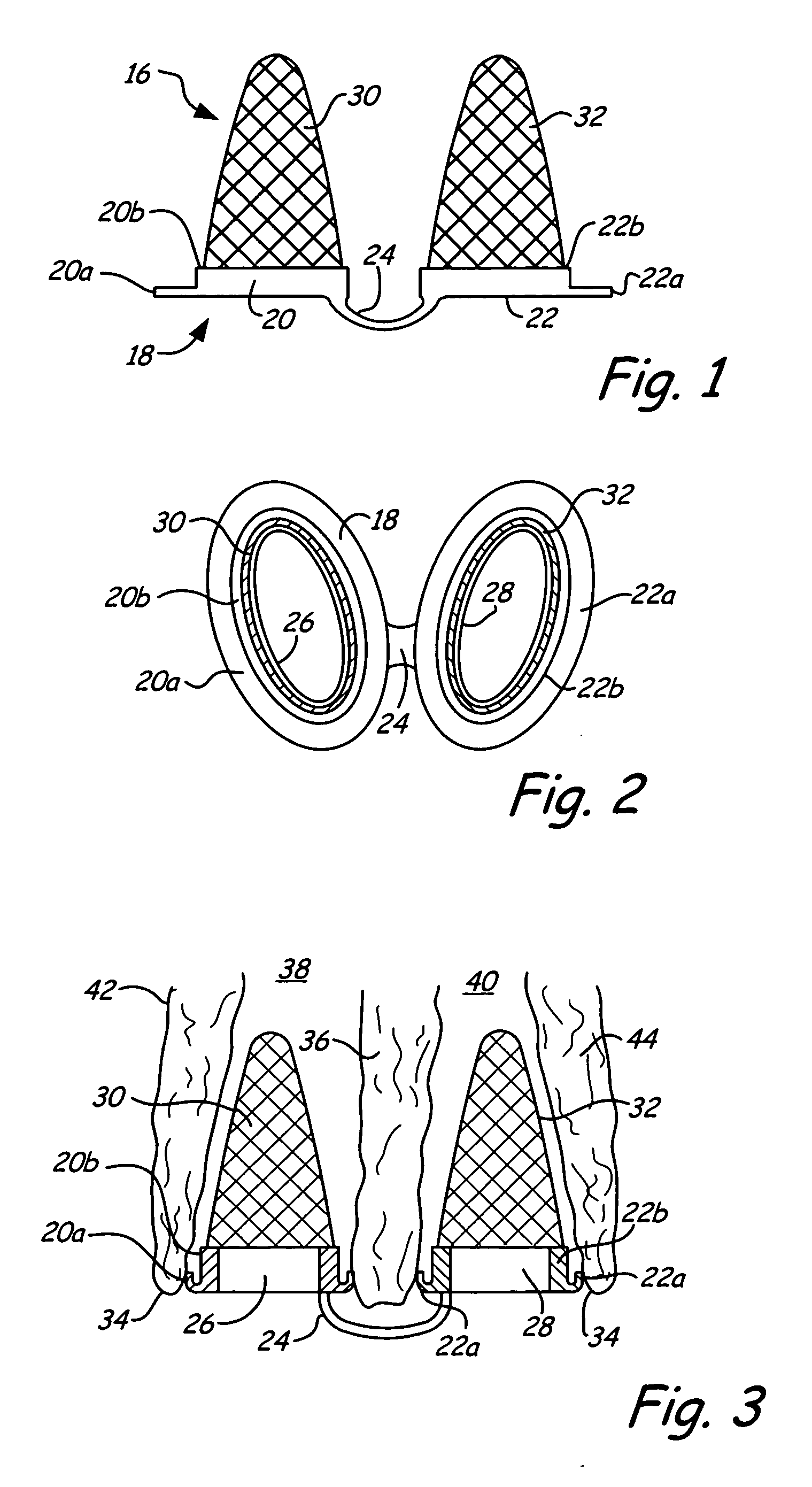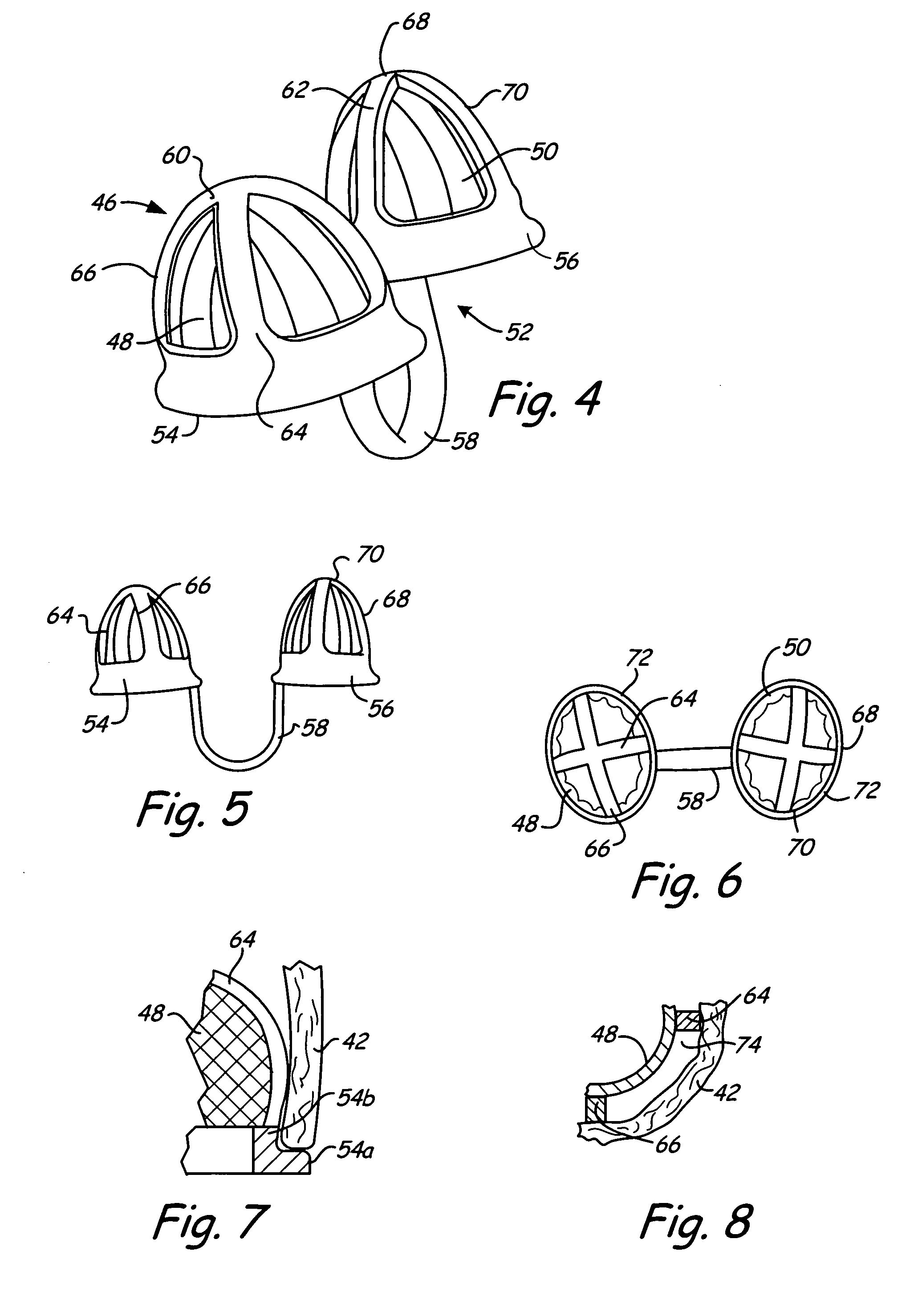Breathing air filtration devices
a technology of filtration device and breathing air, which is applied in the field of breathing air filtration device and filtration device, can solve the problems of increasing the risk of contamination in ambient air, increasing the tendency for carbon dioxide buildup, and affecting the appearance of users, so as to achieve effective and longer-lasting filtration, tear, and reduce the effect of mask wear
- Summary
- Abstract
- Description
- Claims
- Application Information
AI Technical Summary
Benefits of technology
Problems solved by technology
Method used
Image
Examples
Embodiment Construction
[0050]Turning now to the drawings, there is shown in FIG. 1 a nasal air filtering device 16 insertable into the nasal cavities to filter ambient air as it is inhaled by the user. Device 16 includes a unitary support structure or panel 18, preferably formed of a hypo-allergenic material such as polyvinyl chloride (PVC) or polyurethane. The panel is structurally self-supporting and further is flexible and compliant so that it readily conforms to the anterior surface of the nose, in particular the anterior nares and septum, when device 16 is in use.
[0051]Panel 18 includes a base 20, an opposite base 22, and a connecting member or bridge 24 coupled to the bases to maintain the bases spaced apart from one another a desired distance. Each of the bases is annular—more precisely, generally annular in sense that its profile is somewhat elliptical rather than circular. Bases 20 and 22 have respective closed or endless perimeter regions 20a and 22a, and shoulders 20b and 22b that surround open...
PUM
 Login to View More
Login to View More Abstract
Description
Claims
Application Information
 Login to View More
Login to View More - R&D
- Intellectual Property
- Life Sciences
- Materials
- Tech Scout
- Unparalleled Data Quality
- Higher Quality Content
- 60% Fewer Hallucinations
Browse by: Latest US Patents, China's latest patents, Technical Efficacy Thesaurus, Application Domain, Technology Topic, Popular Technical Reports.
© 2025 PatSnap. All rights reserved.Legal|Privacy policy|Modern Slavery Act Transparency Statement|Sitemap|About US| Contact US: help@patsnap.com



